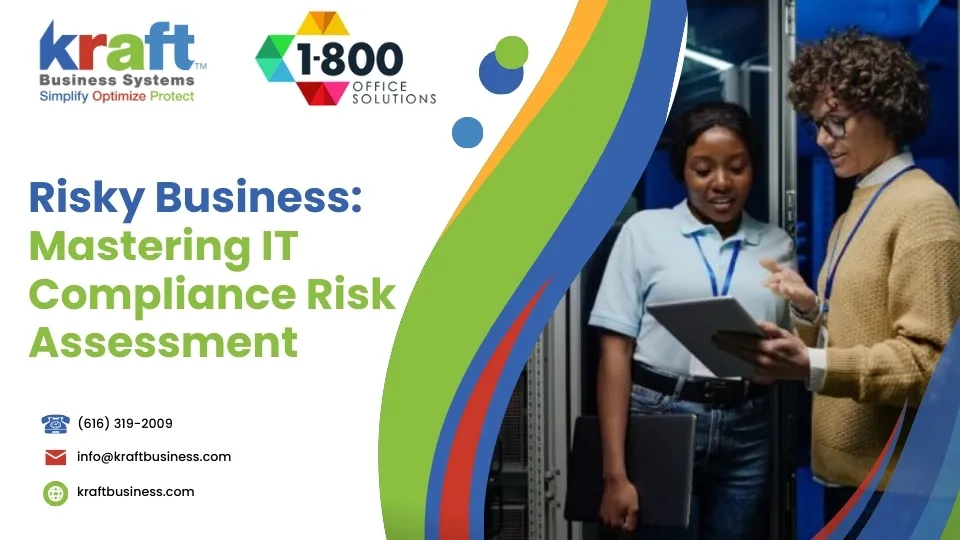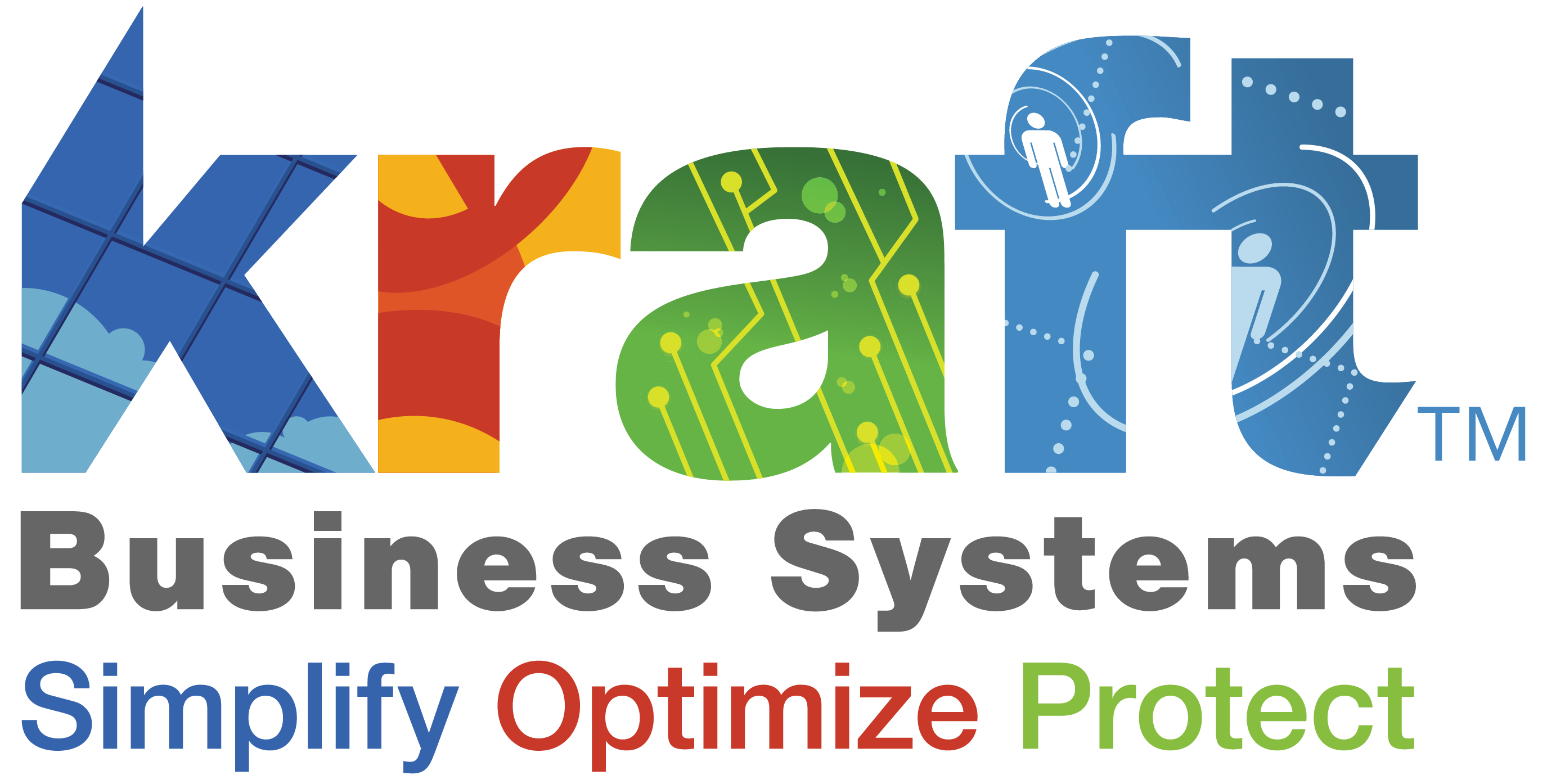IT compliance risk assessment is crucial for any business navigating today’s complex regulatory landscape. Businesses must carefully evaluate their IT systems to identify potential risks, align with regulatory requirements, and avoid fines or reputational damage.
- What is IT compliance risk assessment?
It’s a process to ensure your IT systems meet legal and industry standards. - Why is it important?
To protect sensitive data, avoid legal penalties, and maintain customer trust. - Key actions include:
Identifying risks, implementing controls, and keeping up with regulatory changes.
Modern businesses, especially those in tech-savvy regions like Michigan, face a challenging regulatory environment that demands attention. From compliance withGDPR in Europe to HIPAA in healthcare, companies must ensure they are prepared for multiple regulatory frameworks. An effective compliance program can be a lifesaver, offering not only a safeguard against legal repercussions but also serving as a foundation for robust risk management.
By addressing the unique risks of their operations, businesses can better protect themselves against issues related to data privacy, fraud, and other compliance challenges. With the right approach, leaders can turn compliance from a headache into a competitive advantage.
IT compliance risk assessment word roundup:
Understanding IT Compliance Risk Assessment
IT compliance risk assessment is all about understanding how well your IT systems follow the rules. It’s like checking if your homework meets the teacher’s guidelines before you hand it in.
Risk Exposure
Every business deals with risks. In the IT world, these risks can be anything from data breaches to system failures. Risk exposure refers to the potential impact these risks can have on your business. Imagine if sensitive customer data were leaked. The damage to your reputation and the financial penalties could be huge.
To manage this, you need to know where your risks are. This means looking at every part of your IT systems to find weak spots before they become big problems.
Regulatory Compliance
Regulatory compliance means following the laws and rules that apply to your business. In IT, this could mean ensuring data protection under laws like GDPR or HIPAA. These regulations are there to protect customers and ensure businesses act responsibly.
Failing to comply can lead to fines, legal action, or even losing the right to operate. But compliance isn’t just about avoiding penalties. It’s about building trust with your customers by showing that you take their data seriously.
Compliance Requirements
Every industry has its own set of compliance requirements. For IT, this might include securing data, managing access controls, and ensuring systems are safe from cyber threats.
Understanding these requirements is key. You need to know which rules apply to your business and what steps you need to take to meet them. This might mean training staff, updating software, or even overhauling your IT infrastructure.
By staying on top of regulatory compliance and understanding your risk exposure, you can turn compliance from a burden into a benefit. It’s not just about ticking boxes; it’s about ensuring your business runs smoothly and safely.
Key Steps in IT Compliance Risk Assessment
To keep your IT systems in line with regulations, follow these key steps. They help you identify, analyze, and manage risks effectively.
Identify Risks
Start by spotting potential risks. This means looking at your IT systems and processes to find weak spots. Gather input from employees, conduct internal audits, and review past incidents. By doing this, you can create a list of risks that need attention.
Pro tip: Encourage employees to report any practices that might raise compliance concerns. Their input can be invaluable.
Analyze Risks
Once you’ve identified potential risks, it’s time to analyze them. Determine how likely each risk is to occur and what impact it could have on your business. This step helps you understand which risks are most pressing and need immediate action.
Consider using a compliance risk matrix to visualize the severity and potential impact of each risk. This tool can help you prioritize effectively.
Prioritize Risks
Not all risks are equal. Some might have a bigger impact on your business than others. Prioritize risks based on their severity and likelihood. Focus on the ones that could cause the most harm first.
Ask yourself: Where are existing controls failing to address these risks? How can you improve them to prevent issues?
Implement Controls
Now, put measures in place to address the prioritized risks. This could involve updating policies, deploying new technologies, or providing training to employees. Make sure these controls are effective and can prevent, detect, or correct any compliance violations.
Testing your controls is crucial. Ensure they work as intended before moving on to other risks.
Update Assessments
Compliance is an ongoing process. As your business grows and regulations change, so will your risks. Regularly update your risk assessments to keep up with these changes. Routinely monitor and test your controls to ensure they remain effective.
By following these steps, you can create a robust IT compliance risk assessment process that protects your business and keeps you aligned with regulatory requirements. Next, we’ll explore some common IT compliance risks and how to handle them effectively.
Common IT Compliance Risks
When it comes to IT compliance risk assessment, understanding common risks is crucial. These risks can impact your business’s ability to comply with regulations and protect sensitive information.
Data Privacy
Data privacy is a top concern for any organization handling personal information. Regulations like the GDPR and CCPA set strict guidelines on how data should be collected, stored, and used. Failure to comply can lead to hefty fines and damage to your reputation. To mitigate this risk, ensure robust data protection measures are in place, such as encryption and access controls.
PHI Mishandling
For healthcare organizations, the mishandling of Protected Health Information (PHI) is a significant risk. Under HIPAA, entities must safeguard patient data to prevent unauthorized access or breaches. This involves conducting regular risk assessments and implementing strong security protocols. Neglecting these steps could result in severe penalties and loss of trust from patients.
Disaster Preparedness
Disasters, whether natural or human-induced, can disrupt IT systems and lead to data loss. A lack of disaster preparedness not only threatens business continuity but also compliance with standards like ISO 27031 and NIST. Developing a disaster recovery plan that includes regular drills and team coordination is essential to minimize disruption and ensure quick recovery.
Payment Card Data
Protecting payment card data is critical for businesses that handle financial transactions. The Payment Card Industry Data Security Standard (PCI DSS) provides a framework to secure cardholder information. Compliance involves regular security assessments and implementing measures to prevent data breaches. Working with Qualified Security Assessors (QSAs) can help ensure your systems meet these standards.
By being aware of these common IT compliance risks, you can take proactive steps to address them and maintain compliance. In the next section, we’ll dig into frameworks that can support your compliance efforts.
IT Compliance Risk Assessment Frameworks
When navigating IT compliance risk assessment, having a solid framework is essential. One of the most widely recognized frameworks is the COSO framework. This framework is designed to help organizations establish effective internal controls, which are crucial for mitigating compliance risks.
COSO Framework
The Committee of Sponsoring Organizations (COSO) framework offers a structured approach to internal controls. It’s not just about financial reporting—COSO extends its reach to operational and compliance objectives too. This makes it a versatile tool for any organization looking to strengthen its compliance posture.
Key Features of COSO:
- Internal Controls: COSO provides guidance on creating and applying internal controls across all levels of a company, regardless of industry.
- Risk Identification: It helps identify and evaluate risks, allowing for the development of appropriate mitigation strategies.
- Fraud Prevention: The framework emphasizes maintaining an acceptable level of risk with a focus on fraud prevention.
Risk Controls
Implementing risk controls is a critical part of managing compliance risks. These controls are measures that help prevent, detect, and correct compliance issues. The COSO framework can guide organizations in designing and executing these controls effectively.
Examples of Risk Controls:
- Preventive Controls: These are designed to avoid errors or irregularities from occurring. Examples include access controls and segregation of duties.
- Detective Controls: These identify issues after they have occurred, such as audits and reconciliations.
- Corrective Controls: These address problems once they are detected, ensuring they do not reoccur.
Residual Risk
Residual risk is the risk that remains after all controls have been implemented. No system can eliminate all risks entirely. However, by using frameworks like COSO, organizations can minimize these risks to an acceptable level.
Managing Residual Risk:
- Regular Assessment: Continuously evaluate the effectiveness of your controls to ensure they are working as intended.
- Adjust Controls: Modify or improve controls as needed to address any emerging or unforeseen risks.
- Monitor Changes: Stay updated with regulatory changes and adjust your strategies accordingly.
By leveraging frameworks like COSO and implementing robust risk controls, organizations can better manage their compliance risks and reduce residual risk. This proactive approach is key to maintaining compliance and protecting your business.
In the next section, we’ll answer some frequently asked questions about IT compliance risk assessment.
Frequently Asked Questions about IT Compliance Risk Assessment
When it comes to IT compliance risk assessment, there are common questions that arise. Let’s tackle a few of them.
What should an IT risk assessment include?
An effective IT risk assessment should cover several key areas:
- Information Assets: Identify all the data, systems, and hardware that need protection. Knowing what assets you have is the first step in safeguarding them.
- Threats: Recognize potential threats that could exploit your vulnerabilities. This could be anything from cyber-attacks to natural disasters.
- Vulnerabilities: Determine weaknesses in your systems that could be targeted. Understanding these gaps helps in planning better defenses.
How is a compliance risk assessment done?
Conducting a compliance risk assessment involves several steps:
- Identify Risks: Start by pinpointing where your organization might be vulnerable. This includes understanding the regulatory requirements your business must comply with.
- Evaluate Procedures: Examine your current processes and controls. Are they sufficient to meet compliance standards? If not, identify what needs improvement.
- Map Risks: Connect identified risks to possible outcomes and affected parties. This helps in prioritizing which risks need immediate attention.
- Implement Controls: Once risks are prioritized, put controls in place to mitigate them. Test these controls to ensure they are effective.
- Update Assessments: Compliance is not a one-time task. Regularly review and update your risk assessments to adapt to new threats and regulations.
What are the 5 things a risk assessment should include?
A comprehensive risk assessment should always include:
- Hazards: Identify potential sources of harm or compliance breaches.
- Precautions: Determine the measures needed to prevent or reduce the impact of these hazards.
- Findings: Document the results of your assessment. This includes risks identified, controls in place, and areas needing improvement.
- Implementation Plan: Outline how you will address the identified risks. This includes deadlines and responsibilities.
- Review Process: Establish a schedule for regular reviews and updates to ensure ongoing compliance and risk management.
By understanding these key aspects, you can conduct a thorough and effective IT compliance risk assessment. This ensures that your organization remains compliant and minimizes potential risks.
Next, we’ll explore common IT compliance risks and how to address them.
Key Takeaways and Final Thoughts on IT Compliance Risk AssessmentConclusion
At Kraft Business, we understand that effective compliance risk management is crucial for protecting your business from potential threats. Our proactive approach helps ensure that your organization not only meets regulatory requirements but also stays ahead of potential risks.
Why choose Kraft Business for compliance risk management?
- Expertise: Our team of consultants and industry experts is well-versed in managing complex compliance environments. We tailor solutions to fit your unique business needs, ensuring you stay compliant without unnecessary complications.
- Proactive Approach: Compliance is not just about reacting to problems. It’s about anticipating them. We help you identify potential risks and implement strategies to mitigate them before they become issues. This proactive stance is key to maintaining a strong compliance posture.
- Comprehensive Solutions: From identifying risks to implementing controls, we provide end-to-end support for your compliance needs. Our comprehensive solutions cover everything from data privacy to disaster preparedness.
By partnering with Kraft Business, you can be confident that your compliance risk management is in capable hands. We help you steer the complex regulatory landscape with ease, ensuring that your business remains secure and compliant.
For more information on how we can support your compliance efforts, visit our Managed Cybersecurity Services page.
Stay ahead of risks and keep your business secure with Kraft Business.









